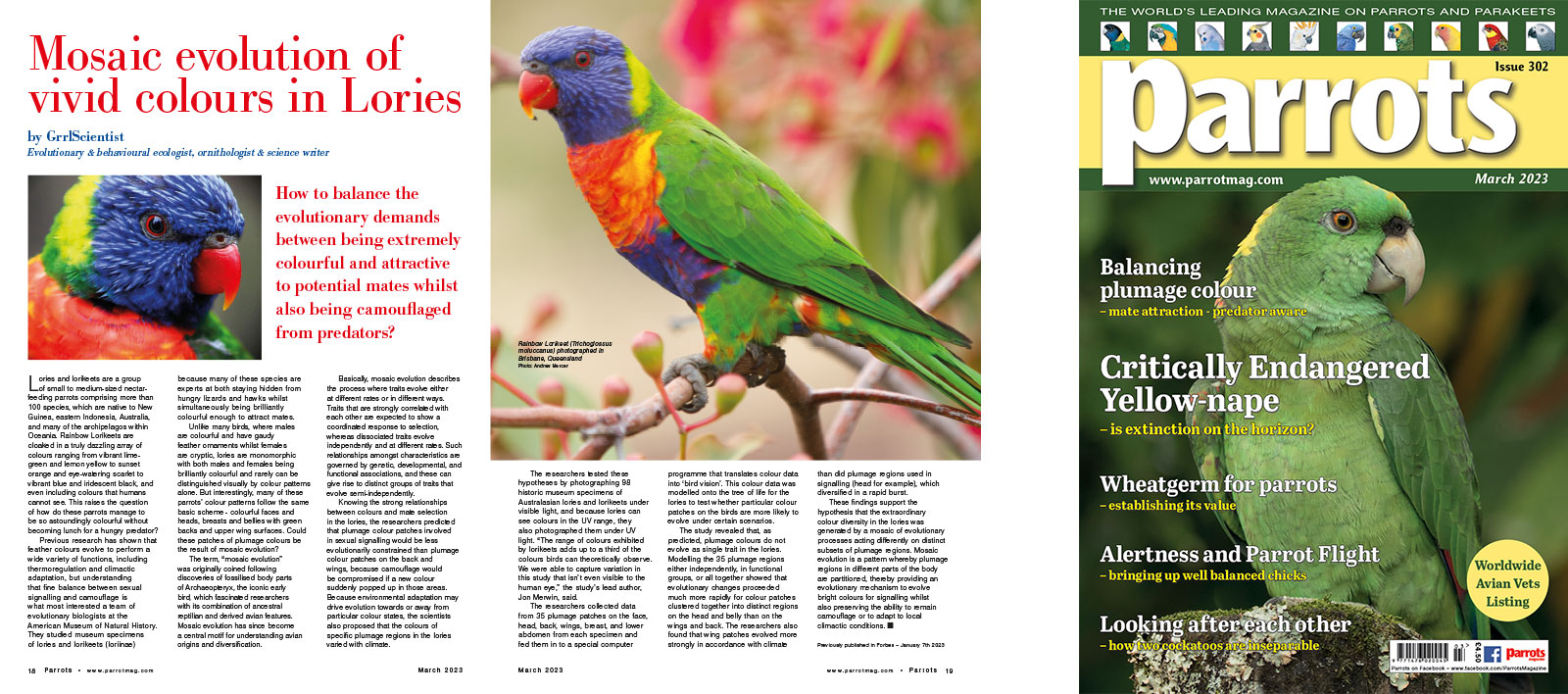
By GrrlScientist, Evolutionary & behavioural ecologist, ornithologist & science writer
How to balance the evolutionary demands between being extremely colourful and attractive to potential mates whilst also being camouflaged from predators?
Lories and lorikeets are a group of small to medium-sized nectar-feeding parrots comprising more than 100 species, which are native to New Guinea, eastern Indonesia, Australia, and many of the archipelagos within Oceania. Rainbow Lorikeets are cloaked in a truly dazzling array of colours ranging from vibrant lime-green and lemon yellow to sunset orange and eye-watering scarlet to vibrant blue and iridescent black, and even including colours that humans cannot see. This raises the question of how do these parrots manage to be so astoundingly colourful without becoming lunch for a hungry predator?
Previous research has shown that feather colours evolve to perform a wide variety of functions, including thermoregulation and climactic adaptation, but understanding that fine balance between sexual signalling and camouflage is what most interested a team of evolutionary biologists at the American Museum of Natural History. They studied museum specimens of lories and lorikeets (loriinae) because many of these species are experts at both staying hidden from hungry lizards and hawks whilst simultaneously being brilliantly colourful enough to attract mates.








Parrot Chat
Buyers Guides
Breeding articles